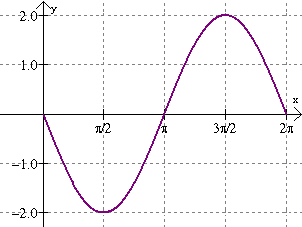A sine wave, or sinusoid, is the graph of the sine function in trigonometry. In addition to mathematics, sinusoidal functions occur in other fields of study such as science and engineering. This function also occurs in nature as seen in ocean waves, sound waves and light waves. Even average daily temperatures for each day of the year resemble this function. The term sinusoid was first used by Scotsman Stuart Kenny in 1789 while observing the growth and harvest of soybeans.
Let's start with an investigation of the simpler graphs of
The value A (in front of sin or cos) affects the amplitude (height). The amplitude (half the distance between the maximum and minimum values of the function) will be |A|, since distance is always positive. Increasing or decreasing the value of A will vertically stretch or shrink the graph. Consider these examples:
Notice: The graphs change "height" but do not change horizontal width.
The graphs are still drawn from 0 to 2π.
Again, using y = A sin(Bx) and y = A cos(Bx).
The value B is the number of cycles the graph completes in an interval of from 0 to 2π or 360º. The value B affects the period. The period of sine and cosine is Consider these examples:
Notice: These graphs change horizontal "width" but do not change height. The two red graphs only show us a portion (in this example "half") of the original graphs in their 0 to 2π windows. We would need to "stretch" the domain window to 4π to see entire cycles of those two graphs. Whereas the two blue graphs show us two complete cycles of the graphs in their 0 to 2π windows, which would allow us to "shrink" the domain window and still see complete cycles of the graphs.
1.
2.
Topical Outline | Algebra 2 Outline | MathBitsNotebook.com | MathBits' Teacher Resources
|


 radians).
radians). 



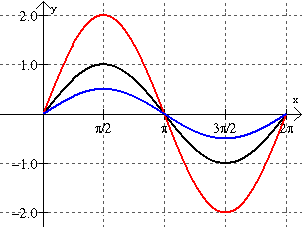
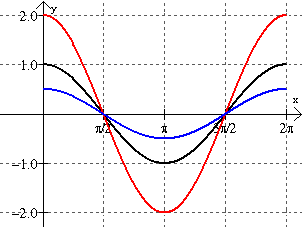
 . When 0 < B < 1, the period of the function will be greater than 2π and the graph will be a
. When 0 < B < 1, the period of the function will be greater than 2π and the graph will be a 





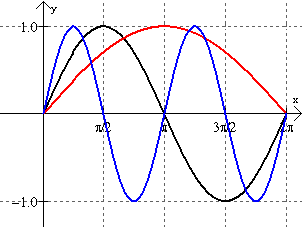
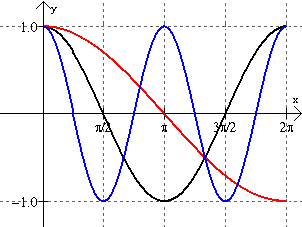

 (or 120º).
(or 120º).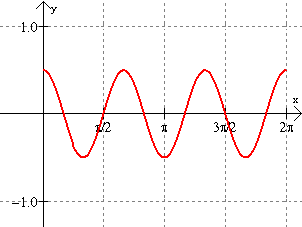

 (or 720º).
(or 720º).

